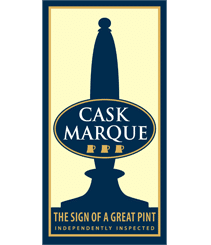Unless you’ve been on holiday somewhere really nice, you’ve probably seen the furore around CAMRA’s AGM last month. After the two year-long regeneration project, members voted on modernising resolutions that would represent the most ambitious changes in the organisation’s 47 year history.

There’s been a lot of despair, doom and gloom, some if it misplaced. People who blame ‘CAMRA’ for not modernising seem to forget that it’s the executive of CAMRA who proposed the motion. CAMRA wants to modernise: a small but significant minority of members don’t want it to.
I blogged at length about where the campaign goes from here, so I won’t repeat myself now. But in the weeks since the vote, I’ve kept thinking about cask ale and what its future holds. And I’m worried.
Many of us often look to CAMRA for direction on cask, which isn’t always appropriate given that it’s a consumer rather than an industry organisation. They let the collective cask industry off the hook, taking the force of blows that should be aimed elsewhere.
The latest Cask Report tried to spin the line that cask may be in decline, but that it’s out performing the market as a whole.
But this is only true if you aggregate the data over a period of five years or more, which is precisely why the Report does that instead of giving year-on-year figures. Look at the last year or two, and cask is by far the worst performing sector of the beer market, and it’s getting worse, with double-digit year-on-year decline.
You could point to many reasons for this, but for those close to it, the main one is the extremely variable quality of cask at the point of sale.
When I wrote about this in early 2017 the cask ale industry mounted a fierce and widespread public rebuttal of my points. As I say in my blog, I can’t help thinking of this ‘everything is fine with cask, honest’ public position as being similar to the bloke in his fifties who has a pain in his stomach and refuses to go to the doctor about it, waiting for it to go away. It’s not going to go away.
The level of staff training and knowledge about cask, and the way it is kept in thousands of pubs, is simply not good enough. Cask Marque does its job, but only for its members. Some brewers help – others don’t. Yes, of course, if you know the industry, you know which pubs can be relied upon. But to advance that argument is to accept that many pubs selling cask are not good enough. People who used to the risk in return for the reward of complex, characterful beer now have far more consistent craft keg options instead. So what’s the point of taking the risk with cask?
Until the industry comes together and institutes an urgent cross-party task force to improve cask quality and educate the consumer why it’s worth bothering with, the double-digit decline will continue. How bad does it have to get before cask gets taken in for that doctor’s check-up?
Reprinted with permission
Copyright © 2018 Pete Brown, All rights reserved.
You can sign up here to receive newsletters from Pete Brown


